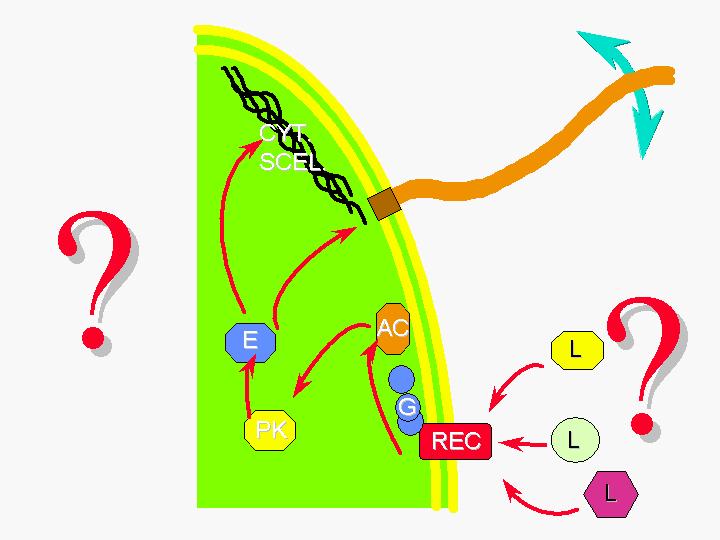In the phylogeny of signaling chemotactic responsiveness
embodies one of the most ancient biological responses of single cells. Recent
studies of the required signaling and effector mechanisms of chemotaxis
demonstrate that there are significant differences in chemotaxis of prokaryotic
and eukaryotic cells.
On the basis
of reference data in literature eukaryotic protozoa and especially
Tetrahymena pyriformis serve a special role in the investigation of
chemotactic signaling. Pionir works of research groups of Kidder, Schultz,
Nozawa, Roth and Csaba demonstrated that Tetrahymena possess homologous
signaling mechanisms (receptors, second messenger systems, metabolic and
auto- or paracrine activity) to the higher ranked animals.
On the other
hand, chemotaxis is one of the most essential, cell-physiological response
of these free-swimming unicellular organisms. Investigation of molecular
approaches of this function potentially helps to understand “tactics” and
“strategy” of this very ancient form of biological activity, while on the other
hand it provides the possibility to describe basic, however well-conserved
backgrounds of signaling, working in invertebrate and vertebrate levels of
phylogeny.
